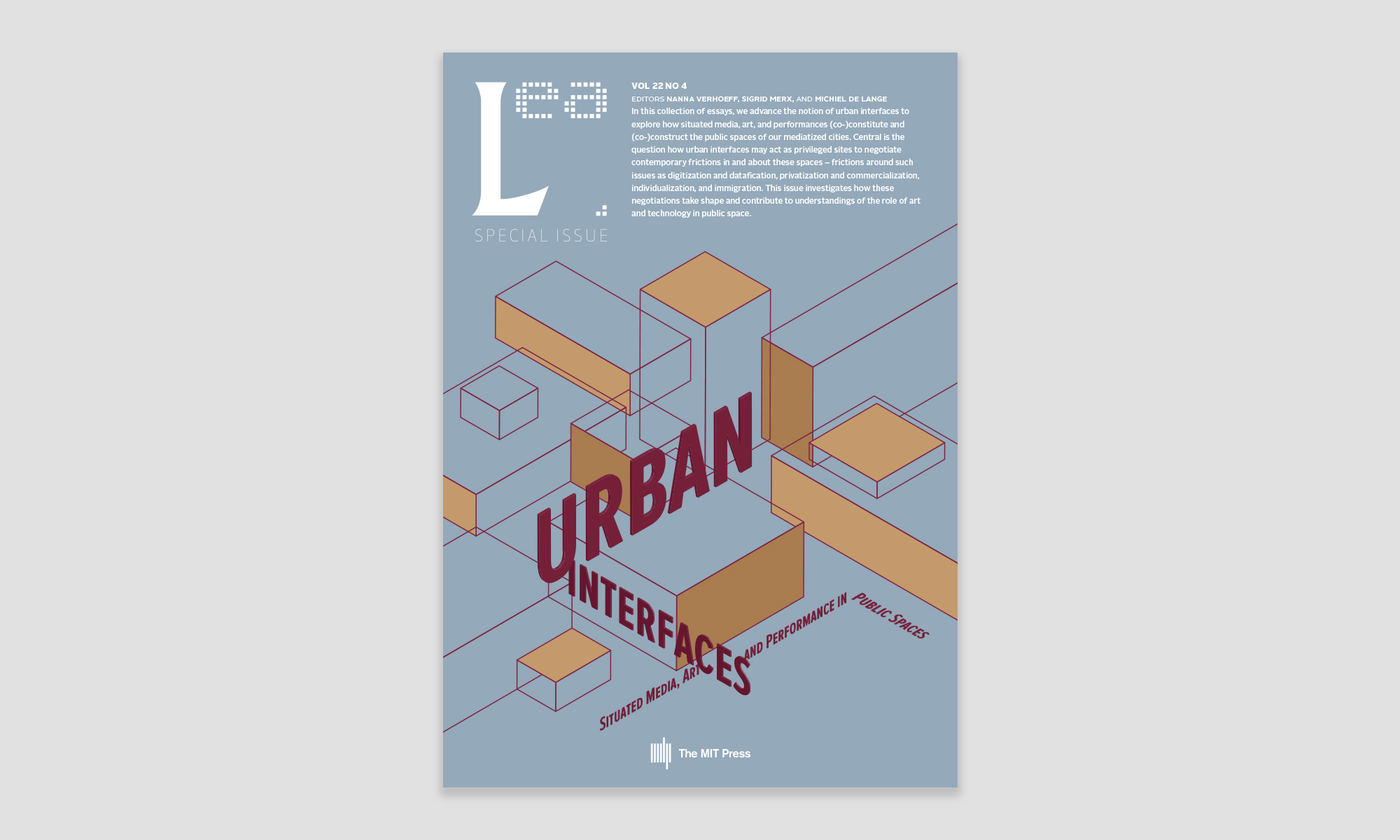Emma Fraser
Honorary Research Fellow, University of Manchester and Teaching Fellow in Sociology, University of Leeds
Email: emma.fraser@manchester.ac.uk
Clancy Wilmott
Lecturer in Human Geography, University of Manchester
Email: clancy.wilmott@manchester.ac.uk
Reference this essay: Fraser, Emma and Clancy Wilmott. “Interfacing the (In)Visible: Urban Encounters in the Hidden City.” In Urban Interfaces: Media, Art and Performance in Public Spaces, edited by Verhoeff, Nanna, Sigrid Merx, and Michiel de Lange. Leonardo Electronic Almanac 22, no. 4 (March 15, 2019).
Published Online: March 15, 2019
Published in Print: To Be Announced
ISBN: To Be Announced
ISSN: 1071-4391
Repository: To Be Announced
Abstract
Field Trip, released by Google/Niantic, is one of a growing number of touring apps available on phones, smart watches, tablets, and other mobile devices, that enable users to undertake digitally-supported exploration of (particularly) urban environments. Combining augmented reality, cartographic interfaces and geographic data, these apps offer situated, visual, and geo-locative urban experiences. While one element of touring apps is to connect users to local features, food, historical sites, and other typical tourist attractions, many vaunt their capacity to reveal the secret city, a capacity delivered by the triangulation between the visual, the urban, and the datafied, fostered through digital interfaces. Using urban theory and media theory, this contribution argues that apps like Field Trip reiterate a visual regime of navigation between screens, data, and urban interfaces.
Here, urban interfaces are understood as an encounter between discrete objects in a city characterized by flux. This essay refers to specific examples of hidden and ruinous sites in Manchester to draw out the contradictions of apps like Field Trip in relation to the ‘hidden’ city, using Walter Benjamin’s notion of fascination to understand the broader implications of relying upon interface-based tours to navigate and negotiate the politics of urban space. As this paper delineates, this also presents a further contradiction: in order for secret or hidden sites to be made visible to the user, they necessarily become incorporated into multiple systems of classification, and regimes dedicated to making the invisible visible.
Keywords: Mobile mapping, digital interfaces, critical geography, haunting, urban space
Introduction
To construct the city topographically—tenfold and a hundredfold—from out of its arcades and its gateways, its cemeteries and bordellos, its railroad stations and its…, just as formerly it was defined by its churches and its markets. And the more secret, more deeply embedded figures of the city: murders and rebellions, the bloody knots in the network of the streets, lairs of love, and conflagrations. [1]
Field Trip, your guide to the cool, hidden, and unique things in the world around you… [2]
Released in 2012 by Niantic (a Google Labs startup), Field Trip is typical of a growing number of mobile phone applications (apps) that claim to offer users obscure and explorative urban experiences. Apps like Field Trip deploy digital interfaces as a way of mediating urban experiences and explorations, playing into and expanding what Nanna Verhoeff has termed a “visual regime of navigation.” [3] This regime is predicated upon the dual actions of looking and moving, and the combined discursive forces of the visual spectacle and the navigation of space. Significantly for this essay, apps like Field Trip are predicated on the particular action of making the invisible or ‘hidden’ city – forgotten pasts, marginal spaces, sites of ruination or secrecy – visible to the user as they move through urban space.
At first, this predication might appear to mirror Walter Benjamin’s topographic unfolding of the secret city, as epitomized in the above quote from The Arcades Project, revealing those deeply hidden sites of the invisible or unseen city that characterize Benjamin’s work on fascination and the experience of the urban. [4] Benjamin sought to understand the city from its secret places and hidden streets, materially encountered through urban wanderings; Field Trip similarly suggests urban encounters with the hidden or unseen city, and the app purports to make an otherwise invisible city visible to the user by guiding them on a tour of unique urban spaces.
Field Trip was the first product released by developer Niantic and is a precursor to other popular Niantic apps like Ingress (2013) and Pokémon GO (2016). [5] Such augmented reality (AR) apps present a digital interface that overlays a complex process of “separation and augmentation” of underlying data and content. [6] This essay argues that apps like Field Trip are designed to intervene in the everyday navigations of the city, a claim echoed by the developers and publicity by the use of terms like tour, guide, path or street, and explore. [7] Through the combination of photography, mobility, and place-based data, the interface of Field Trip stretches into the hybrid space of the city, digital and material, entangling the interface with urban transience and lived experience. [8]
In this essay, Field Trip represents a genre of mobile (phone) applications that combine geo-locative technologies and geographic data with images, maps and graphic information based on the user’s local surroundings. This genre of augmented reality touring apps captures a particular moment in the development of augmented reality and spatially-driven mobile phone applications, in which developers were experimenting with methods to generate movement and footfall by enticing users into wandering the city under the direction of the app, through themes of the unexpected, ruinous, or unexplored. Such apps work to augment and mediate the relationship between the user and their environment, in what Benjamin Bratton has called a “programmatic blending between the architectural or urban situation through which the user moves and the interactions he may be having with a specific app-mediated cloud platform.” [9] Apps that interface between urban environments and cloud networks have become especially popular with the anticipation of mass augmented-reality consumer technologies. This is specifically the case with geo-locative apps, like Field Trip, which interface between cloud networks of urban information, and the specific material urban environment.
When paying heed to the urban in the urban interface, the qualities of this genre of apps can be understood through what Larissa Hjorth and Ingrid Richardson have termed ‘ambient play.’ In ambient play, apps like Niantic’s more well-known Pokémon GO work specifically to engage the playful potential of spaces, routines, localities, and mobility:
Mobile location-based and augmented reality games such as Pokémon GO are manifestly ambient, as they become embedded in our daily routines, pedestrian movement, and interaction with the familiar strangers populating our neighborhoods and urban spaces. [10]
In this essay, the hybrid interface between user, app and city, as well as between the familiar and the strange, is examined through the authors’ own field trip with Field Trip in the neighborhoods and urban spaces of Manchester in the United Kingdom. Through pedestrian movement between, and interaction with, three sites, this essay describes how, despite the critically powerful promise of revealing a hidden urban experience, the app was unable to mobilize the inherent flux of urban environments, primarily due to the fixity of data categorization and the interface’s presentation of information. [11] That is, the trip guided by the app revealed that the ‘hidden’ city is dynamic, but Field Trip (despite claims that point to dynamic illumination and fascination) is not. Through the examination of Field Trip and related apps, this essay argues that a nuanced understanding of urban interfaces might be sought through an active critique of the genre of ambient touring mobile applications. This critique is attentive to the necessary flux of the urban environment and architecture as it changes, but also to myriad modes of interfacing across urban spaces, which dynamically transform with each site of encounter. The experiences afforded by these apps often fall short of revealing the ruinous and fragmented city that they promote, a vision of the city that, for Benjamin and other urban theorists, typifies urban experience under modernity. [12]
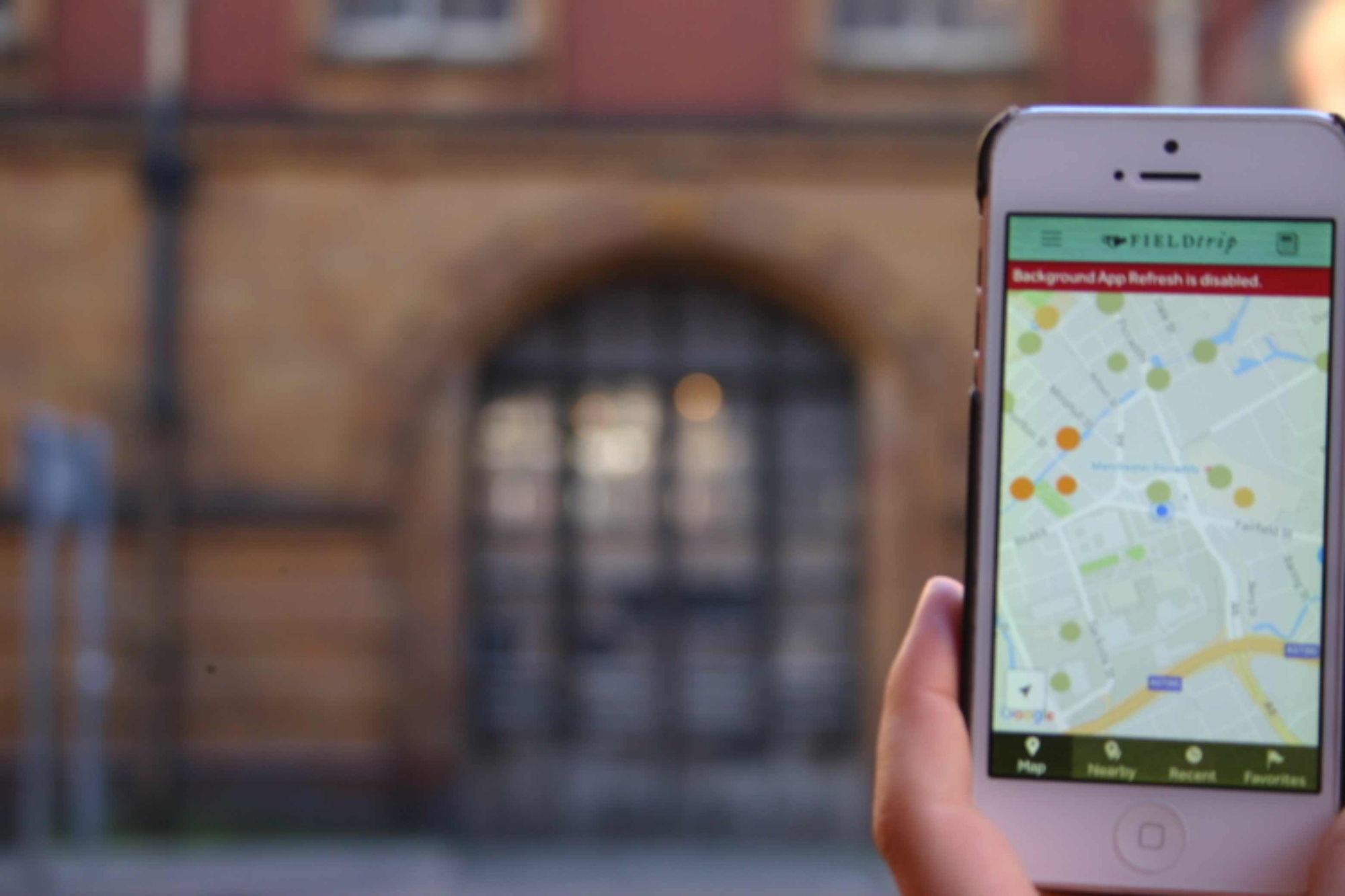
The complexity and fragmentation of the urban form has given rise to the understanding of the city as a site of encounter. [13] Further, built urban spaces co-exist with vital ecologies of animals, plants, geologies, and other material processes. [14] Of particular importance for this essay are the hidden (and therefore neglected or underutilized) parts of the city, sites like urban ruins and wastelands, which sit at the edges of occupied space. [15] At the same time, as this essay considers, digital, representational, technological, social, and cultural domains are also constantly shifting and fragmented. What does it mean when cities, digital interfaces, and disarray come together, as in the case of a field trip with Field Trip? Through the process of following Field Trip, the interface emerges as the site of friction or connection, and urban encounters through digital interfaces demonstrate a coming together of elements defined against a criterion of difference. Historically, the politics of difference might uncover binaries of presence/absence, [16] the hidden and the legible, [17] and the visible and the invisible. [18] Significantly, as Kevin Lynch, Andreas Huyssen and Saskia Sassen attest, the city (as a concept) is a space where basic questions of (in)visibility are specifically engaged through the politics of urban encounter. [19] In the trip taken here, this politics is specifically charted or overlooked by Field Trip. In other words, what does Field Trip make visible or invisible through its attempts to expose the hidden city, by rendering it knowable via a digital interface?
This conceptualization of the urban explicitly pays heed to the generative potential that might erupt in moments and sites of fascination generated through encountering difference. Thus, as Helen Wilson and Jonathan Darling argue, urban encounters are:
Centrally about the maintenance, production and reworking of difference; that encounters fundamentally frame urban experiences and subjectivities; that encounters produce and encompass multiple temporal registers; and that encounters offer points of possible transformation and an opening to change. [20]
Here, urban encounters not only have the possibility to bring multiple spatialities together but also multiple temporalities, where urban pasts and futures collide. This is a crucial argument: the urban is a space of vital materiality and possibility, of becoming and unbecoming. [21] Again, Benjamin’s work on the hidden and ruinous city points to a potential politics underlying encounters with the invisible, a politics that could potentially include the kinds of engagements ostensibly generated through AR experiences of urban space.
Against this understanding of the urban through difference and fragmentation, the notion of an interface (or interfacing) becomes particularly slippery. James Ash argues that conceptualizations of the interface as: a “computational device”; “practice”; “[a] carrier […] of cultural logics and ideologies”; a “link between digital and analogue”; or as “affective” render the interface as little more than a tool for human activity. [22] To combat this, Ash proposes a reading from a post-phenomenological perspective which understands the interface as a “series of objects, the capacities and affects of which exist beyond a relation with the human.” [23] Absent from Ash’s definition, however, is the sense of the ephemerality of the object itself, as it transforms and decays; the kind of ephemerality we see within the city’s built forms. Further, the linear relationality of Ash’s objects excludes what Doreen Massey describes as a ‘coformation,’ or mutual production of processes within space. [24] If the interface is spatial, and space is under constant flow, objects themselves may combine or break up into smaller objects, with infinite sites of encounter. [25] Further, they may inform each other, defined by their relative difference, as they co-form with, through or against one another. As we see in the concept of encounter, it is precisely this generative possibility, what Wilson and Darling (above) call “an opening to change,” in which the potentials of urban interfaces come to the fore. [26]
In this essay, we therefore extend Ash’s definition of the interface to the urban context more broadly, emphasizing the coming together of different objects as spatial, and the interface, in its relationality, as a spatial site of encounter. Thus, we understand an urban interface as an encounter between two discrete objects. These objects are not defined by their ability to maintain form across time and space, they are mapped against each other at the level of difference, even as they co-form, in ways that may be interpreted and reinterpreted. The study of Field Trip shows that such apps exploit urban difference in an attempt to evoke something akin to what Benjamin calls ‘fascination’ with the diversity of everyday urban life, the chaos and disorder of the city. [27]
As this essay describes, the invitation to fascination (reflected in the emphasis on the hidden or invisible city to be made present by the functioning of the app) does not materialize in the process of following the cards that pop-up in Field Trip, and that have been designed to shape the exploration of the secret and hidden. Yet a productive fascination still emerges through incidental encounters that vacillate between the (often blurred) boundedness of constituent parts that present a different kind of interface: a wall, a sign, a moving train, a still ruin. In response to the specific field trip undertaken for this essay, the eruption that is of particular interest here is the persistent interfacing of the visible and the invisible in urban spaces despite (not because of) the Field Trip app. [28] It is important to make clear that the objects within this encounter are not limited by scale: a finger stroking a wall or a mushroom pushing through the pavement are no less situations and sites of urban interfacing than a vehicle on a road or a projection onto a building. Indeed, this discussion troubles the perception that an interface must be between self and screen, because (as the trip revealed) there is constant interfacing between bodies and buildings; surfaces and objects; sites and encounters, whether there is an app-directed tour or not.
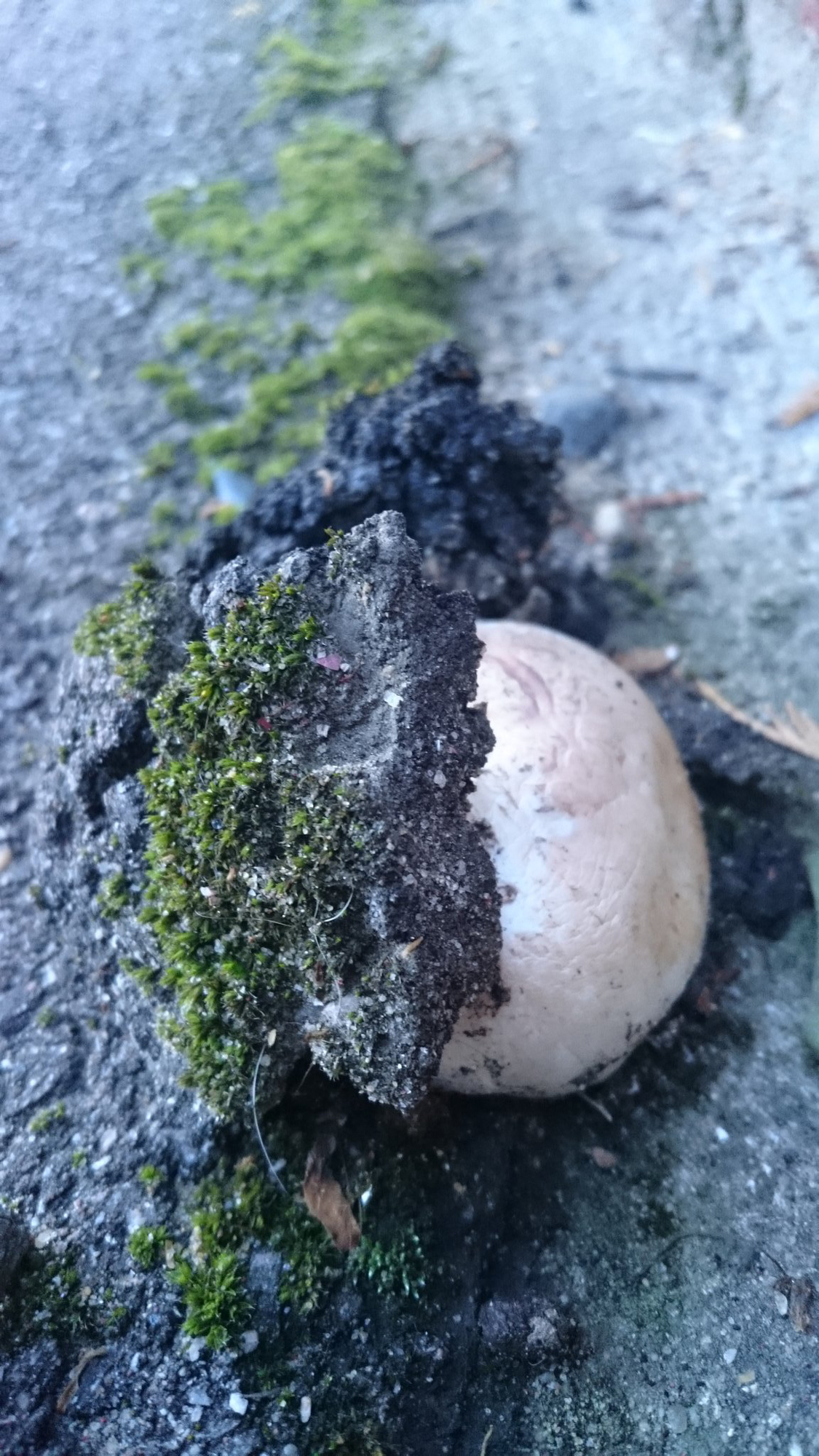
That is, the digital interface does not supersede the interfacing already at work within urban environments (contra to claims of novelty or radical change apportioned to the digital). Neither do apps like Field Trip enter into an empty urban space devoid of the politics of in/visibility. Rather, the urban interface opens up potential precisely because it remediates processes already in play (such as the securitization or abandonment of urban architecture). [29] Specifically, apps like Field Trip, which purport to present a unique interface between humans and the hidden parts of the city, contradict their own aims through the mechanism of making visible via classification, legibility and the ordering of data and space.
Fascination and the Hidden Gem
To understand urban interfacing, and the digital/material city, the authors took a field trip with Field Trip. Using an experimental style and method that varies throughout the discussion in response to the experience of the three sites visited, this essay argues that this genre of mobile apps seeks to monopolize, even capitalize on, the way in which the urban is encountered. Through Field Trip, architectural, cultural, and social aspects of the city blend into urban interfaces to produce specific mediated encounters, with specific qualities of fascination. This kind of mediation is likely to become more embedded in the everyday as AR (and in other ways perhaps also virtual reality and hybrid reality) develops upon the code, categorization, and logic of early apps like Field Trip, which, as we will argue, have substantial potential to influence spatial politics of urban encounter through the action of interfacing between objects.
Like its successor Pokémon GO, Field Trip demonstrates a particular quirk that is predicated on spontaneity and proximity. There is no searchable interface. Rather than meeting a request for information, Field Trip gives the appearance of randomly presenting intimate and little-known details about nearby locations, encouraging the user to impulsively go on a trip to a place they might not otherwise consider. Where Likeways (2016) for instance, promises to link users with hidden gems, presenting the choice of either standard or interesting routes, [30] or Abandoned (2009) crowdsources the locations of abandoned buildings and encourages users to post recommendations, pictures and stories, [31] Field Trip provides location-based information, suggestions, and background information without a searchable database (you can only look up the name of a city or suburb). Further, unlike Dérive (2017), which invites you to get lost in your own city (or, rather, a limited selection of cities) and then share your experience in the form of an uploaded map, [32] Field Trip doesn’t require specific output. The role of the user is to explore, follow a flag, or complete a tour, prompted by notifications that pop up on the phone. There is no imperative (or, indeed, means) to upload reflections of your experience, post comments, tag yourself, or otherwise interact with the location/information data:
With Field Trip, the best resources on the web reveal new, unique, quirky, fun and even secret places near you. Field Trip can help you learn about everything from local history to the latest and best places to shop, eat, and have fun. [33]
Therefore, the purpose of the trip described in this essay was partly based on the exploration of spontaneity promised by the app given its dynamic use of proximity, visiting the sites suggested, and moving between them on foot. [34]
11.45am, April 10, 2017
Waiting for the bus, the first pop-up the app provides (unprompted) is for a trip that starts on Oxford Road in south Manchester, travelling to the ‘Mayfield Station’ to the east of the city center. Field Trip presents a library of cards in the bottom half of the screen, and as the Mayfield ‘card’ pops up it reads: “Urban Ghosts – Urban Exploration, Abandoned Places, Hidden History & Alternative Travel.” The Mayfield site appears repeatedly during the trip as we explore, indicating an emphasis within the app’s database on forgotten histories, ghosts, dereliction and desertion. Here, Niantic’s aims draw upon well-established practices of urban explorers, infiltrators, and urban spelunkers (whose clandestine activities became mainstream around the time that the app was in production). [35] Practices like urban exploration hinge on the tensions of difference already present within the urban encounter, tensions which are, in turn, curated by Niantic through the notion of exploring a hidden, and generally ruinous, territory using digital mapping technologies to construct a unique ‘tour’ of urban space.
Field Trip’s focus on exploration via maps that pinpoint subversive or hidden dimensions of the city might at first seem to have an affinity with practices like Situationism, for example Guy Debord and Asger Jorn’s attempts to “mischievously” chart decaying landmarks on a map of Paris, valuing the hidden or unusual and overlooking the common and sanctioned: “The situationist city was a constant play of contrasts, between confined and open spaces, darkness and illumination, circulation and isolation.” [36] The field trip described here thereby sets out with the notion that the unseen or less-travelled sites of urban encounter might provide a profane illumination as well as fascination, for the visitor. [37] Immediately, however, the functioning of the app interrupts this potential politics, as the Mayfield card is replaced by the ‘Hidden Gem’ category of cards that pop up to present more proximal options as we move along Oxford Rd. Key amongst these is the ‘Hidden Gem’ church (see figure 3), which happens to be adjacent to a stop on the bus route; the Guardian Exchange card also pops up halfway along the bus route.
Thus, we have chosen three sites, identified by a combination of drop-down categories and by random sites that pop-up as we move, shaped by both the app’s central interest in exploring the hidden city, and the above interest in the Benjaminian or Situationist politics of subversive experience hinted at by the app’s intended purpose of uncovering the hidden city. Further, they are all sites that do not appear on major pedestrian routes through the city, places the authors have not visited before, thus lending themselves to the notion of exploration in particular, visiting unknown spaces open for encounter.
12.58pm, April 10, 2017
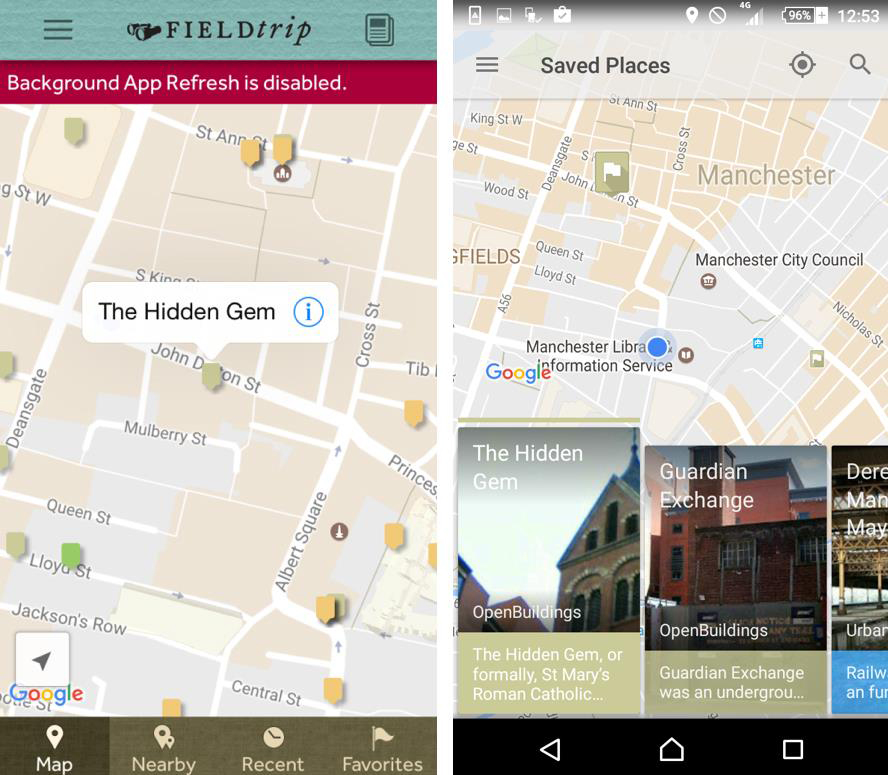
This is a category error, where Field Trip has mistaken the name of the church for an attribute of its hidden quality, pointing to the tensions which erupt as the app negotiates visibility in the city through toponymic structures. Further, the church, while perhaps once hidden, has now been made visible by the app. (In)visibility, like absence/presence, is not a fixed state. Instead, it is relative to encounter, to the notion of difference, as well as fascination. This place is not unlike Benjamin’s bordellos and gateways, in that it is off the beaten track, but it is nothing more than a functioning church with a vaguely interesting name. Field Trip has over-promised; there is no fascination of encounter here, the trip thus far is all spectacle. The mechanism through which the Hidden Gem is found further mutes the potentiality of (for example) a Situationist politics of encountering secret or different spaces by presenting a categorization as an experience of difference. The disappointment is palpable. Instead of a generative encounter between us and the ‘Hidden Gem,’ Field Trip interfaces urban dweller, screen, and architecture with static and ambiguous information that is ultimately meaningless.
12.45pm, April 10, 2017
The lack of difference is in stark contrast to another encounter on the way to the Hidden Gem church: a demolition in progress. The demolition of the building is invisible from the main street, though it can be heard. Following the sounds of slow destruction reveals an alley, at the end of which is a building under demolition (see figure 4).
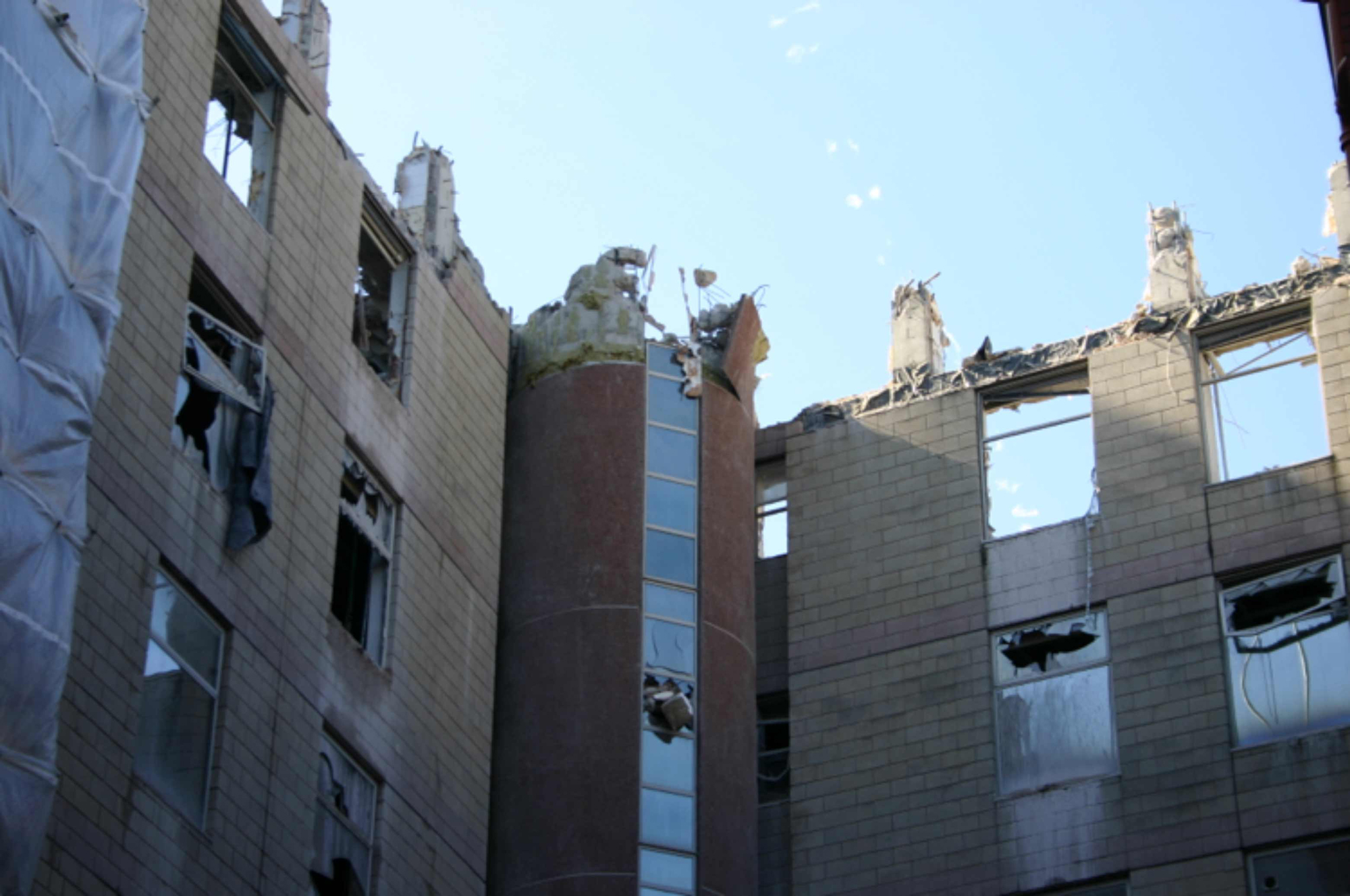
Machine and worker together haphazardly hurl rubble into a skip, three stories below. This unexpected encounter with urban transience immediately throws the idea of the urban interface into relief as the rubble interfaces with the bin, the shards with the sky and the ground, the machine with the fabric of the building. Field Trip is momentarily forgotten in a moment of palpable interfacing with discrete objects: with the building under demolition, with the rubble and the hidden alleyway, with the city in flux. Such an encounter destabilizes the otherwise normative ordering of the city, bustling around the wrecked building – both as a construction zone (like that of Garrett’s practice, below), and as a ruinous structure. Here is an urban encounter typified by fascination through fragmentation and the unexpected or hidden. To expand further on the notion of encounter through everyday fragmentation, consider the Situationist meditation on abandonment:
Encountering a disused tollhouse as ‘a virtual ruin left in an incredible state of abandonment, whose charm is singularly enhanced by the curve of the elevated subway line that passes at close distance.’ [39]
Although the mundane city described above might deliver profound experiences through practices akin to ‘drift’ or ‘dérive,’ which encourage discovery and exploration, it isn’t Field Trip that augments this mode of urban encounter. Instead, it is in the politics of the city and its materiality, uncovered through unstructured exploration. Such exploration, in the form of fascination and intoxication can deliver unexpected experiences, and these are precisely the benefits that the app touts. [40] Yet, this isn’t how the authors encountered the demolition site, precisely because a transient construction, there one day, gone the next, is something that is beyond the app to make visible. The ruinous demolition is a fascinating encounter with difference because of the very marginality that is predicated upon its invisibility, an interface between the seen and the hidden:
Construction sites, like ruins, were largely hidden, opaque, rendered invisible behind barriers. Although they were many times right in the heart of the city, they were sites of a marginal, exclusive city-in-the-making. [41]
Thus, through sites of difference and encounter amongst discrete objects, the urban interface is also found in the friction between the static app, the present and visible Hidden Gem church, and the construction site (which is both, as the quote above suggests, “invisible” and a “city-in-the-making” [42]). Bringing app users to a site of urban change in action is a happy accident through which the app facilitates an encounter with the hidden city. But this is largely because cities (and the interfaces and encounters of the urban) already persist as transient and changing forms, not because of any unique affordance of Field Trip’s exploration-driven spectacle.
Though digital maps can be criticized for giving the illusion of bespoke location-based services in which media and content are delivered in a way that seems specific to each user – a phenomenon Alex Gekker terms ‘uniquity’ [43] – Field Trip barely manages to give correct information, let alone usable recommendations, as it favors data-driven spectacle over curious encounter. This is, at least partly, because Field Trip was designed during the Google Glass era, to reflect a visual aesthetic that was about delivering information-augmented experiences, rather than dynamic and interactive content. During this trip, the fixity of the app is reminiscent of the static visual representation of geo-located place as it appears in another Niantic app, Pokémon GO. In Pokémon GO, Niantic mined data from Google databases and user-sourced material from Ingress, presenting users with outdated (and sometimes incorrectly matched) information about a given location. In the Pokémon GO map interface, for example, a ‘Pokéstop’ in Manchester’s Whitworth Park displays a photograph of a wicker-woman, an intentionally transient art project completed a few summers ago. The wicker-woman (or ‘Willow Genesis’) was one of a number of short-term installations that would slowly degrade as renovations at the nearby gallery progressed. Over time, the wicker woman collapsed and disappeared into the ground. In Pokémon GO, however, the wicker-woman is always there (see figure 5), potentially called up by any player who frequents that location, an urban palimpsest haunting the virtual landscape. [44]
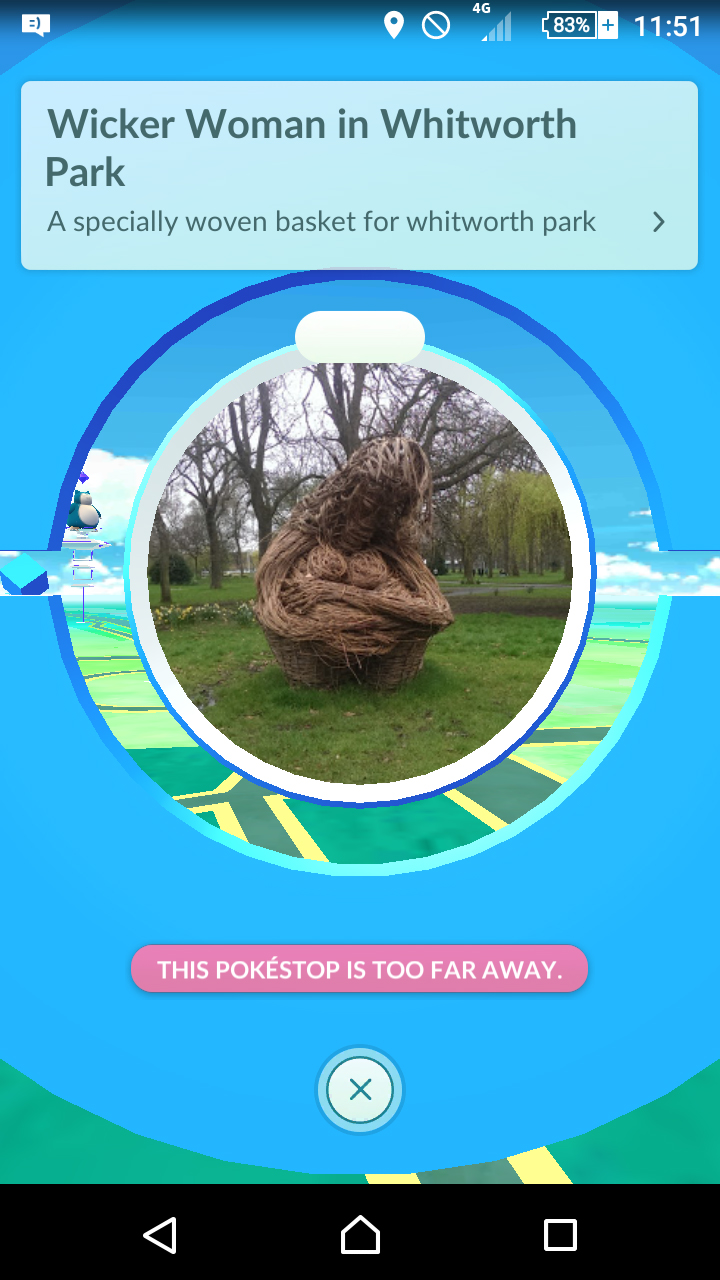
Field Trip is similarly full of ghostly presences on the screen that destabilize material encounters in urban space. Field Trip accidentally produces meaningful encounters, a paradox for the user, who is guided by a visual and navigable spectacle which is ultimately hollow. Though Field Trip appears in part to be designed around alternative urban experiences afforded through the app (for example the themes of urban decay and urban ghosts), upon closer inspection it is little more than a content classification project that exploits the intoxications of urban modernity, while contributing little to the city itself.
Classification and The Guardian Exchange
Swiping through the cards on Field Trip, it becomes clear that subcategories of the app are in fact existing websites, their content mined and melded with an interface (human/phone, screen/map), via which, as Verhoeff states, “knowledge and aesthetic experience converge.” [45] Where the Situationist city was a place of fleeting ephemera and counter-spectacles, the underlying function of Field Trip is the classification of that which is presently unknown to Google. Field Trip presents visually attractive, yet static, information about secret or unusual urban space, the function of which is little more than ornamental: an augmented reality data spectacle. [46]
As exemplified by the Hidden Gem church and the demolition site, the way in which Field Trip sorts its data without attention to the temporal or fluid registers of urban spaces is one of the key barriers to the app’s capacity to negotiate the nuances of urban (in)visibility. Here, the question of urban visibility, and absence/presence also becomes a question of urban legibility, which is, as Kevin Lynch writes: “The ease with which [the city’s] parts can be recognized and organized into coherent patterns.” [47] Lynch describes the aim of urban legibility as the structuring of city landscapes, plans, and architectures into an image of the city in which the ordered is optimal. Field Trip engages this logic beyond the level of visibility, within the classificatory realms of its internal code, hierarchy, and structure. The app draws upon place-based databases, sorts them according to their geo-location and coordinates, and then makes them legible to the user through a regime of proximity: to be near is to be able to see, an expansion of Verhoeff’s “movement in order to see.” [48] Some of these databases include: Open Buildings (openbuildings.com), an archive of contemporary, conceptual, and historic architecture; the ‘city notes’ section of We Heart (we-heart.com); Urban Ghosts magazine (urbanghostsmedia.com), focused on abandoned, esoteric or derelict places; and The History Press (thehistorypress.co.uk), a publisher on local history. Depending on the city, Field Trip mines globally focused resources for data on ‘local’ bars and clubs, and websites that collate and pinpoint ‘local’ history contributions for a global platform. [49]
1.32pm, April 10, 2017
From the Hidden Gem, a card for a new site appears, displaying information about the Guardian Exchange. The data for this destination is drawn from the Open Buildings website, the descriptive text and accompanying photo implanted verbatim into the Field Trip interface. Rumors of nuclear bunkers and war communications are at odds with the situated encounter: an unobtrusive square building with a tall vent, surrounded by a high wall topped with security wire. Assertions from the Open Buildings source material suggesting that the Guardian Exchange is the “Best kept secret in Manchester” may be the reason it appears in the app – but this statement applies more to the previous role of the building as a Cold War communications hub than the site that was revealed on the street.
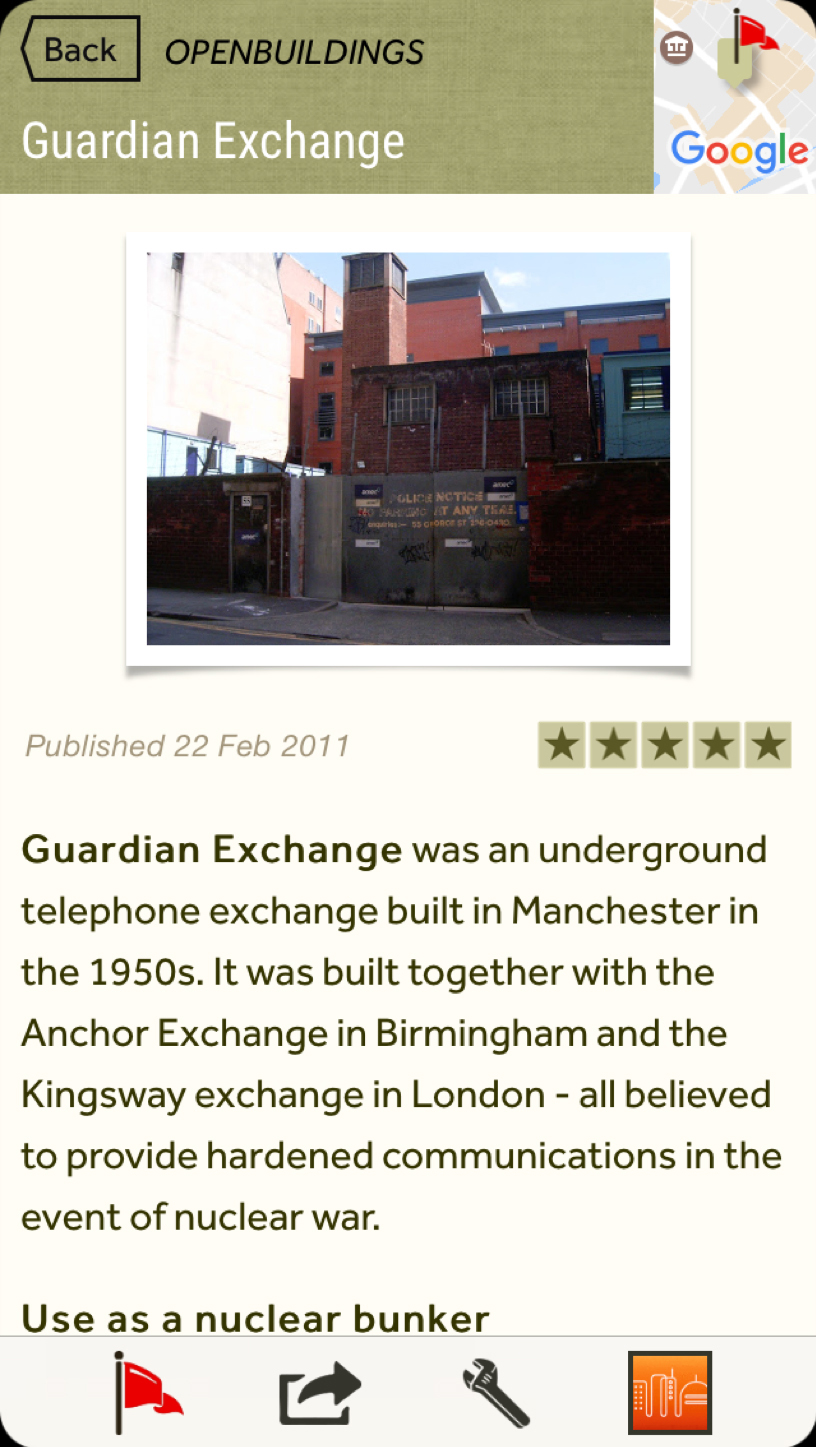
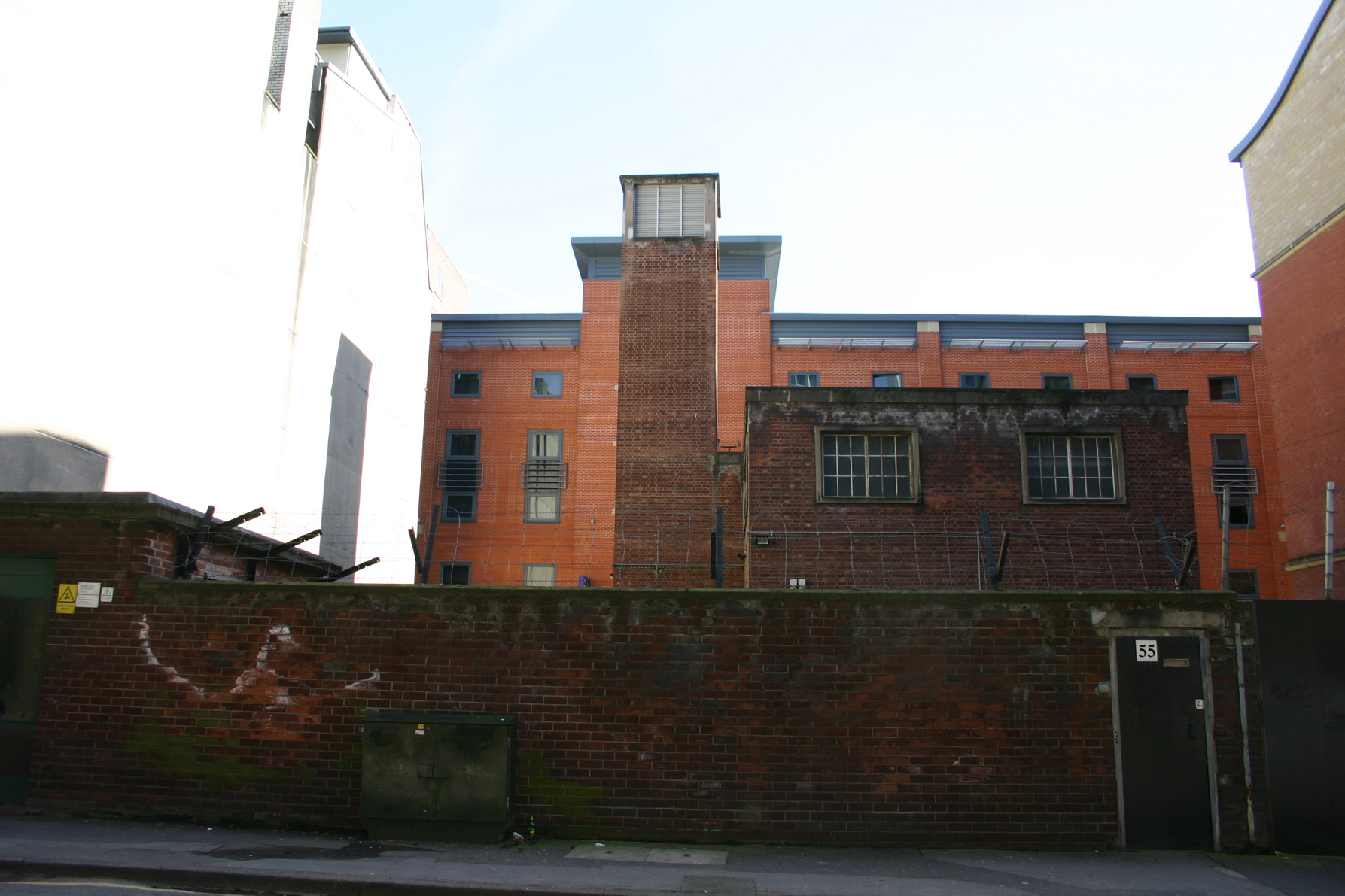
From the encounter with a deserted and locked up Exchange, it is evident that the information provided through the app has little relation to the contemporary present (see figures 6 and 7). The software misfires, and new urban interfaces are generated in the stark difference between the cloud and the city. This is a top-down legibility, where the app seeks to freeze the city in stasis according to its own sorting logic, without any attentiveness to how the city might shift, or how a dynamic and changing urban environment is constantly involved in making differences more (or less) visible. In this way, the app merely exploits a shallow fascination that might erupt from superficial differences generated by urban life but contributes little to the development of productive urban tensions. Once rendered legible by the app, The Guardian Exchange site leaves Field Trip users staring at a brick wall on a banal side street. It’s true that it is hidden (unlike the church), but there’s nothing to see, because the way in which Field Trip creates legibility has little relation to the legibility from the street.
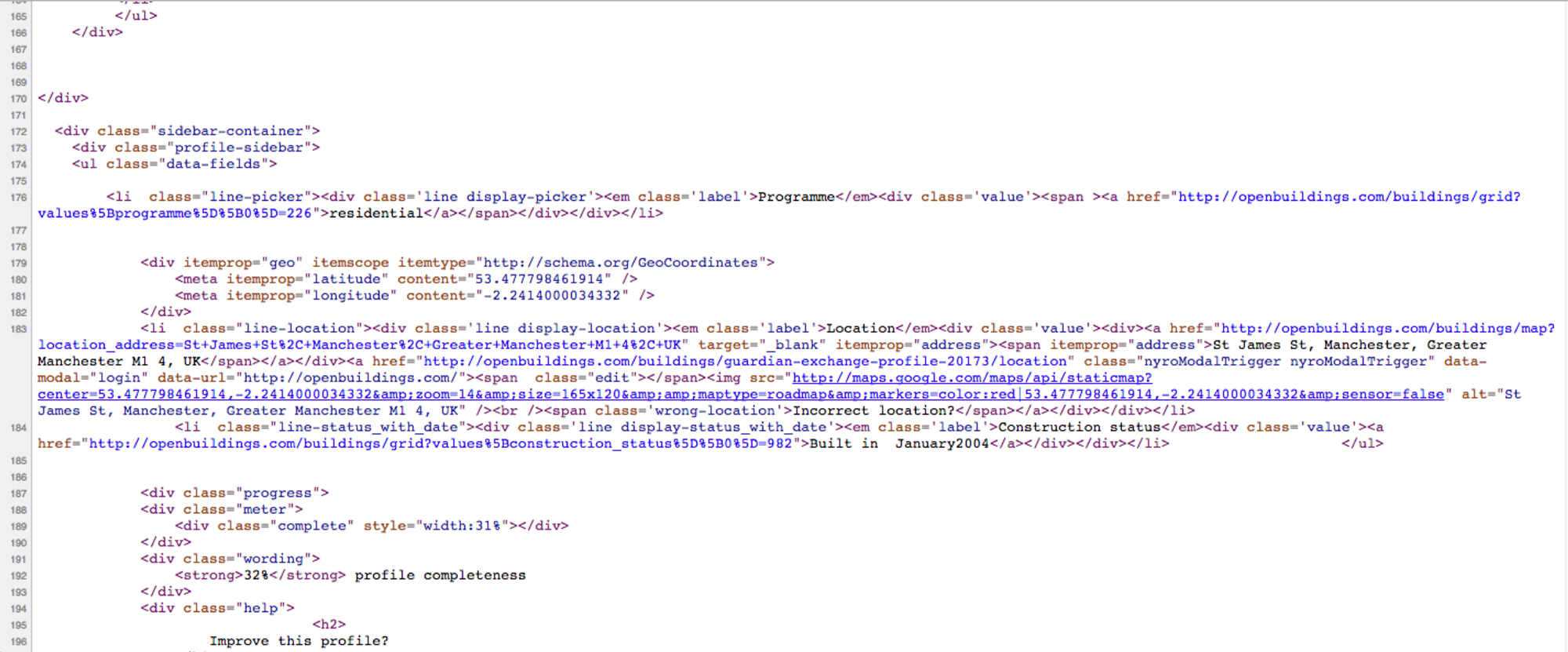
Paradoxically, sorting is crucial to making legible. In this sorting, an unremarkable site is made legible through its once ‘secret’ history, as a result of the quirks of both the app and its logic of making the invisible visible. Field Trip scrapes and geo-tags data from host websites and in doing so, certain locations within the city are made doubly legible through their proximity to the user and the categories into which they have been sorted. Like all digital systems, the re-sorting of data exposes places like the Guardian Exchange to a necessary process of classification, which is how the app makes places legible to those seeking fascination. As Leszczynski states: “Classification cannot be avoided in the digital realm.” [50] The digital nature of the app, the way it sorts data, is part of the reason why it fixes a dynamic environment, and also unpredictably delivers the promised urban encounters with the hidden or invisible city (that is, often by accident, if at all). Classification, in this case, pre-determines categories of difference from the cloud, rather than making difference visible through situated encounters. A promised bunker, finally found, does not evoke Benjamin’s fascination, but rather a banal everyday spectacle that appears far more interesting in the app interface than in the material one.
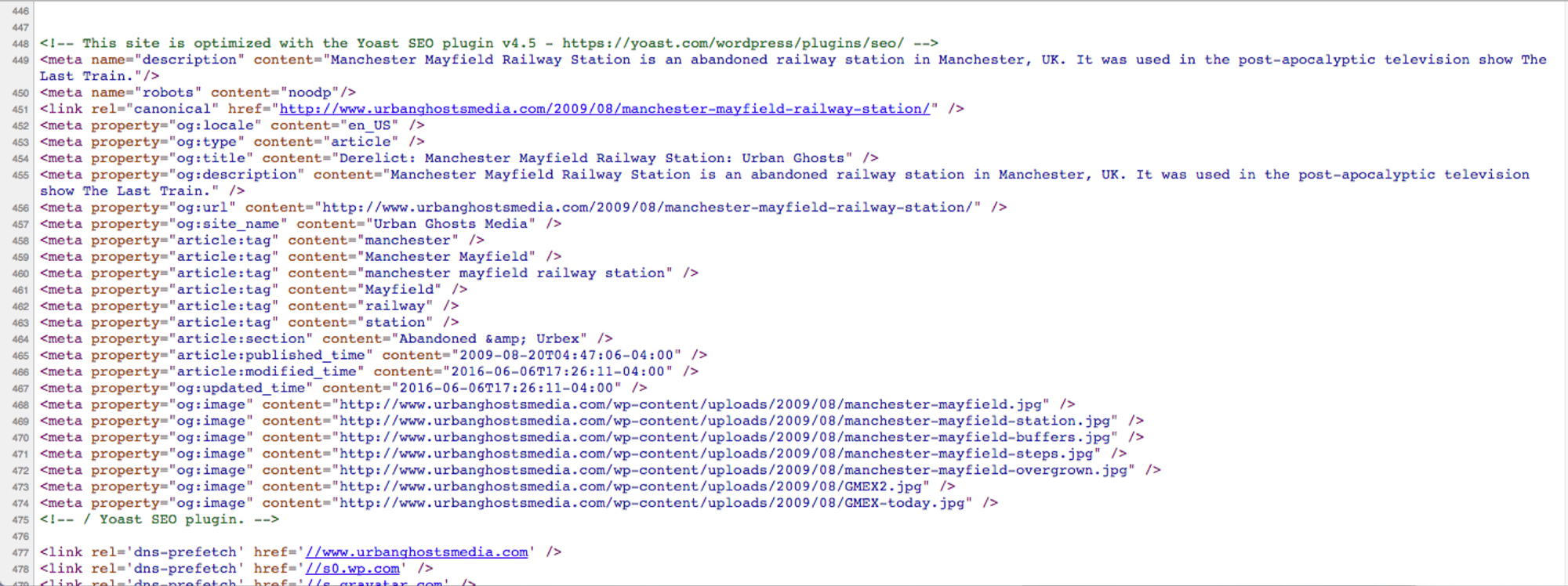
As figure 9 shows, sorting and resorting occurs across multiple levels of metadata: location coordinates, key words, page titles, image descriptions and file names. All data has metadata, which makes it searchable, sortable and ordered. Field Trip does not alter the metadata from the original sources, it merely recalculates and re-presents data according to a different (visual and cartographical) format. Field Trip uses geo-tags as the primary sorting mechanism, determining the sequential display of locations according to their proximity to the user. The apparently random cards that pop up actually reflect a logic of proximity, where the closest sites are at the top of the screen (as shown in figure 10). In this re-sorting, the depth or quality of difference becomes less crucial than how near or far those encounters might be from the user. At the same time, the visual design of the app hides this from the user, obscuring the role of the coordinate data that structures the interface of the app (expressed in figure 11).
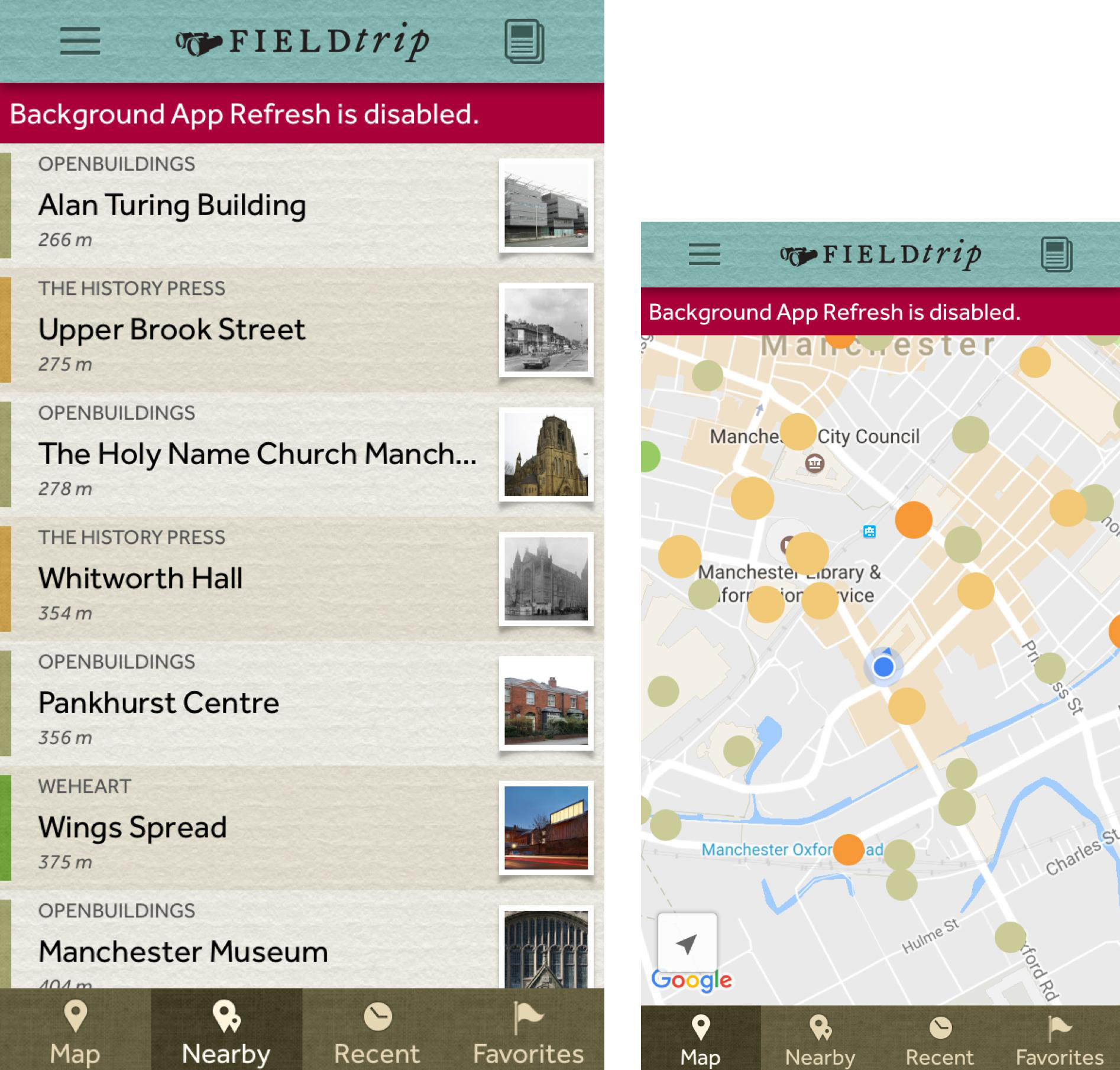
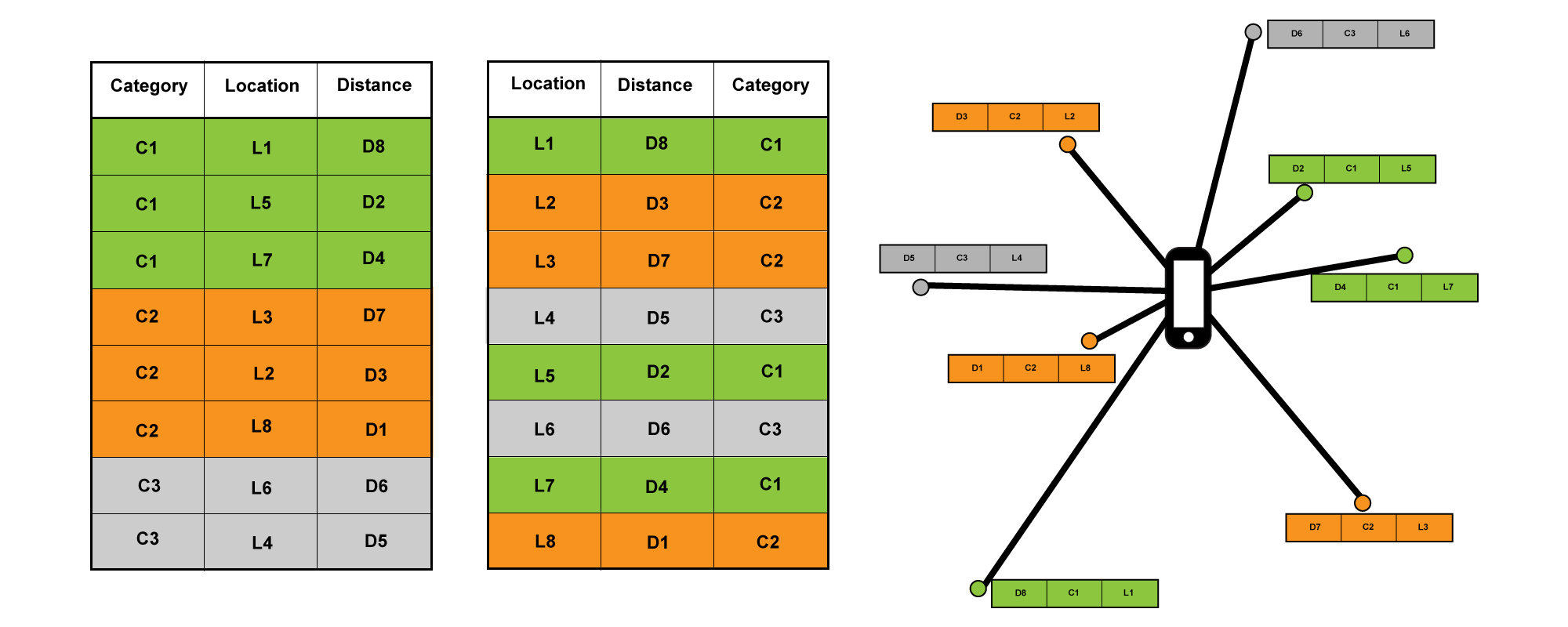
The kind of data mining used in this example also raises the question of whether the ‘unique’ experiences offered by Field Trip are merely redistributions of data mined from third party databases, rearranged but not resituated in lived experience? Can the repurposing of this data really claim to afford unique engagement with contemporary urban processes, especially when the app inherits and does not change base-line categories produced by other websites for different purposes? (see figure 10) For example, authors on Open Buildings or Urban Ghosts structure their content around the logic of looking (displaying spectacular images and superfluous descriptions of urban phenomena), while Niantic relays them onto generic and global mapping applications like Google Maps for the sake of expressing proximity. The presentation of data on the screen may be briefly unique to the user moving through, but two users standing next to each other in the same location will see the same data, albeit differently arranged depending on their operating system, GPS, and other hardware configurations (see figure 10). That is: the data (images, content, categories, recommendations) are not unique, though they are modular, based upon the user’s pinpointed location, selections, and software/hardware. Neither are the sites ‘hidden,’ they have just been tagged as such, then (re)presented to the user based on their location in space.
Again, returning to the disappointment of The Guardian Exchange and the politics of fascination, the tension of difference becomes melancholic. On Benjamin’s melancholy, Ackbar Abbas writes:
What then is the melancholic? In Benjamin, the melancholic is someone divided in loyalty between the orderliness of knowledge and the fascination of a world in disarray. [51]
Both interfacing (the coming together of objects), and the moments of encounter and difference that interfacing can generate, are limited by the disjunction between order and disarray in the experience of Field Trip. The app simultaneously interfaces user, device, and environment for the purpose of making the invisible visible, attempting to trigger a kind of novel fascination with the disordered world. Yet, in delivering a static experience due to the reliance on ordering data, the app does not consider the situated encounter. It is, in short, melancholic, divided between orderliness and disarray, between productive fascination, and banal repetition. This is partly due to the visual spectacle that privileges proximity while only displaying image and information, emphasizing visibility and legibility rather than fascination.
Navigation and the Mayfield Station
2.30pm, 10 April, 2017
The field trip finally moves toward Mayfield station, an iconic site of abandonment and dereliction. Field Trip shows images of a vast interior, ruinous and derelict. Two different ‘cards’ that pop up repeatedly give a history of the British Railways with an (outdated) summary of the station’s use; and a slightly more current speculation of the station’s outlook circa 2015. Neither card explicitly engages with the stations’ state of decay, and despite a series of pictures from the interior that could be easily labeled as “ruin porn,” [52] neither does it suggest that this site might be secured to prevent entry by visitors (or could be dangerous for people to enter).
In Field Trip, the detail about the Mayfield site originates from the Urban Ghosts online magazine source, where written content is populated with external images from photo-sharing sites like Flickr, rendering the information at least twice removed from the original. From the content in the app, the user might expect a site open for urban exploration and feel encouraged to pursue this urban ghost through the associations between abandoned and derelict sites, and the activity of touring the unseen city. At the same time, the material provided is detached and informative: a point on a map, some visuals, and a summary. Though the user may not perceive this, ‘urban ghost’ is really a tag left over from the original data source, not a place, nor a phenomenon (see figure 12).
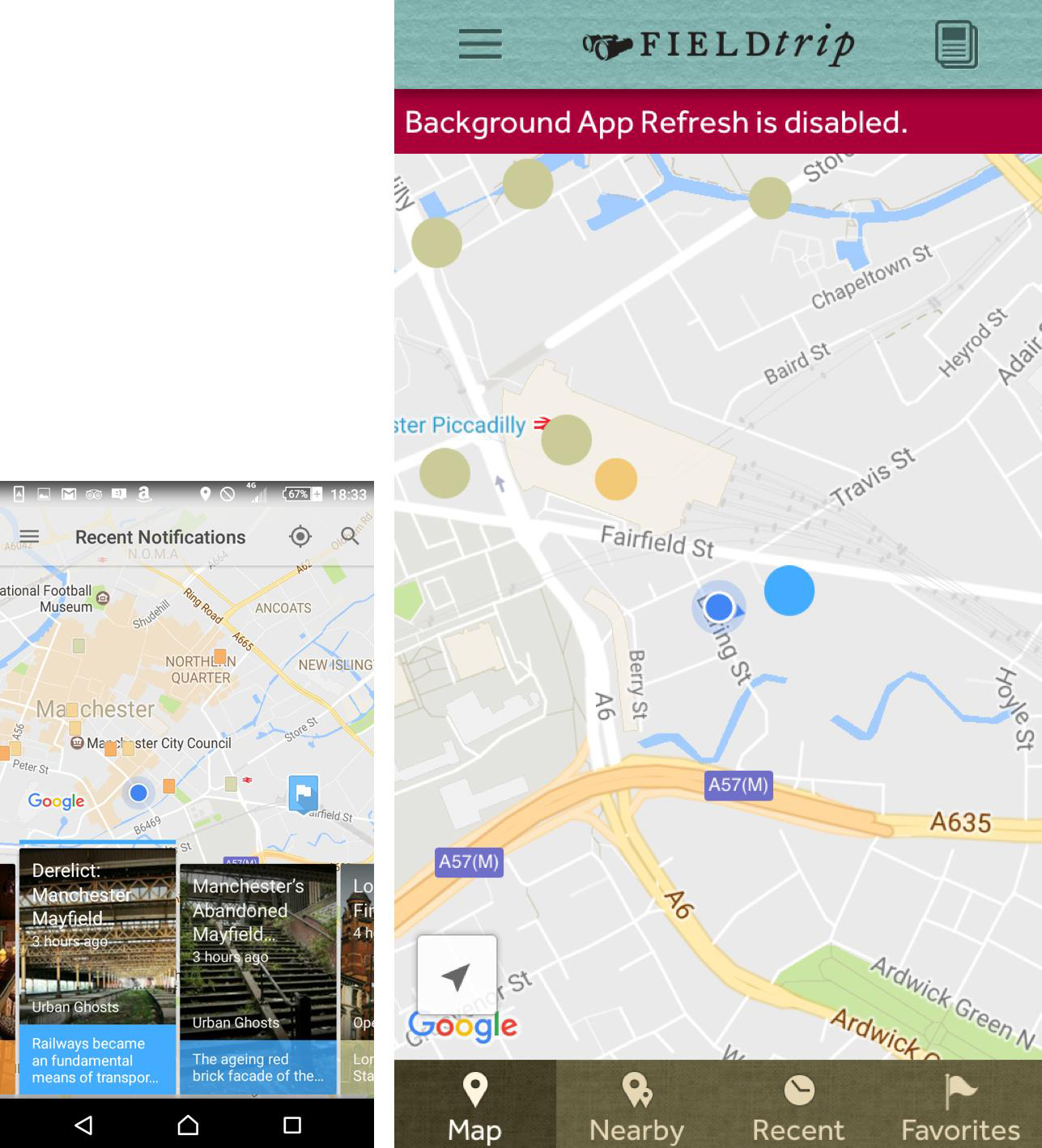
As the categorical data from these websites are repurposed into the various functionalities of the Field Trip interface, a particularly interesting shift occurs from a visual regime of the (in)visible, into a visual regime of (not-quite) navigation. This shift is both explicitly intertwined with the aforementioned interrelations of visibility and invisibility, as well as the rearrangement of data according to a logic of proximity. When the hierarchy of information becomes delimited by interest, but ordered according to your location, the interface presents a simplistic array of information for the explicit purpose of looking. This phenomenon is best explained by Nanna Verhoeff’s visual regime of navigation, in which moving and looking intertwine. As Verhoeff states:
The self-referentiality of the mobile gaze is crucial to the visual regime of navigation, geared as it is towards finding one’s way in a visual field starting from the current location of ‘you are here.’ [53]
The process of rearranging the structure of the locational data from site to proximity reflects this visual regime of navigation: not only to look, but to find; not only to see, but to match the image presented by the interface with the perceptual image of the material building. This visual regime of navigation, underscored by “mobility, perception, performativity and experience” is brought forth by the constant dialogic actions of looking, and moving, via the interface. [54] Where this becomes a hybrid action between bodily movement in space and looking through the screen of the phone, it becomes a performative cartography, [55] or in Ingrid Richardson’s more ontological terms, ‘being-with-equipment.’ [56] Here, though the politics of difference may be lacking, the app nevertheless becomes absorbed into the experience of the city, and the city into the experience of the app.
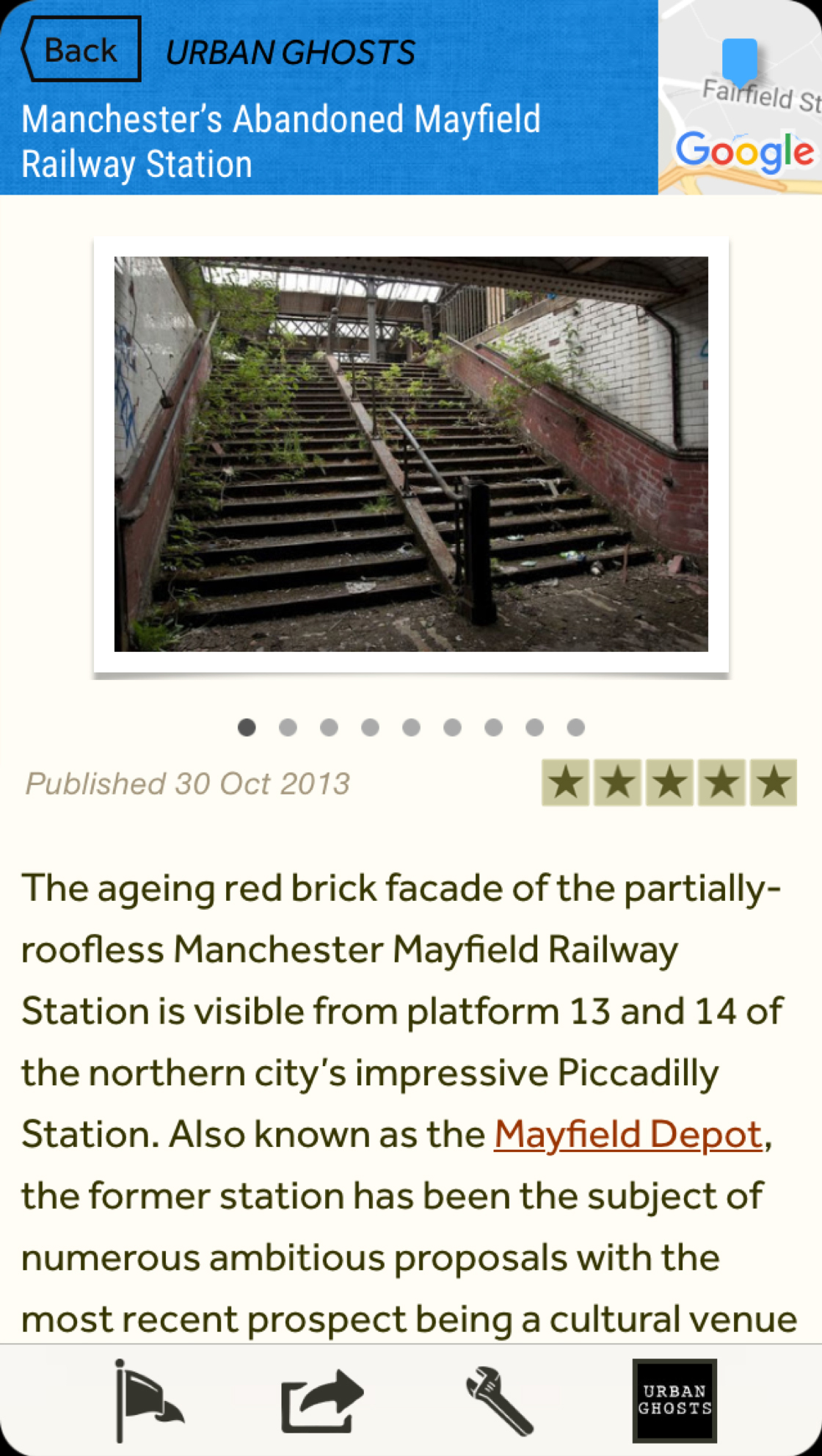
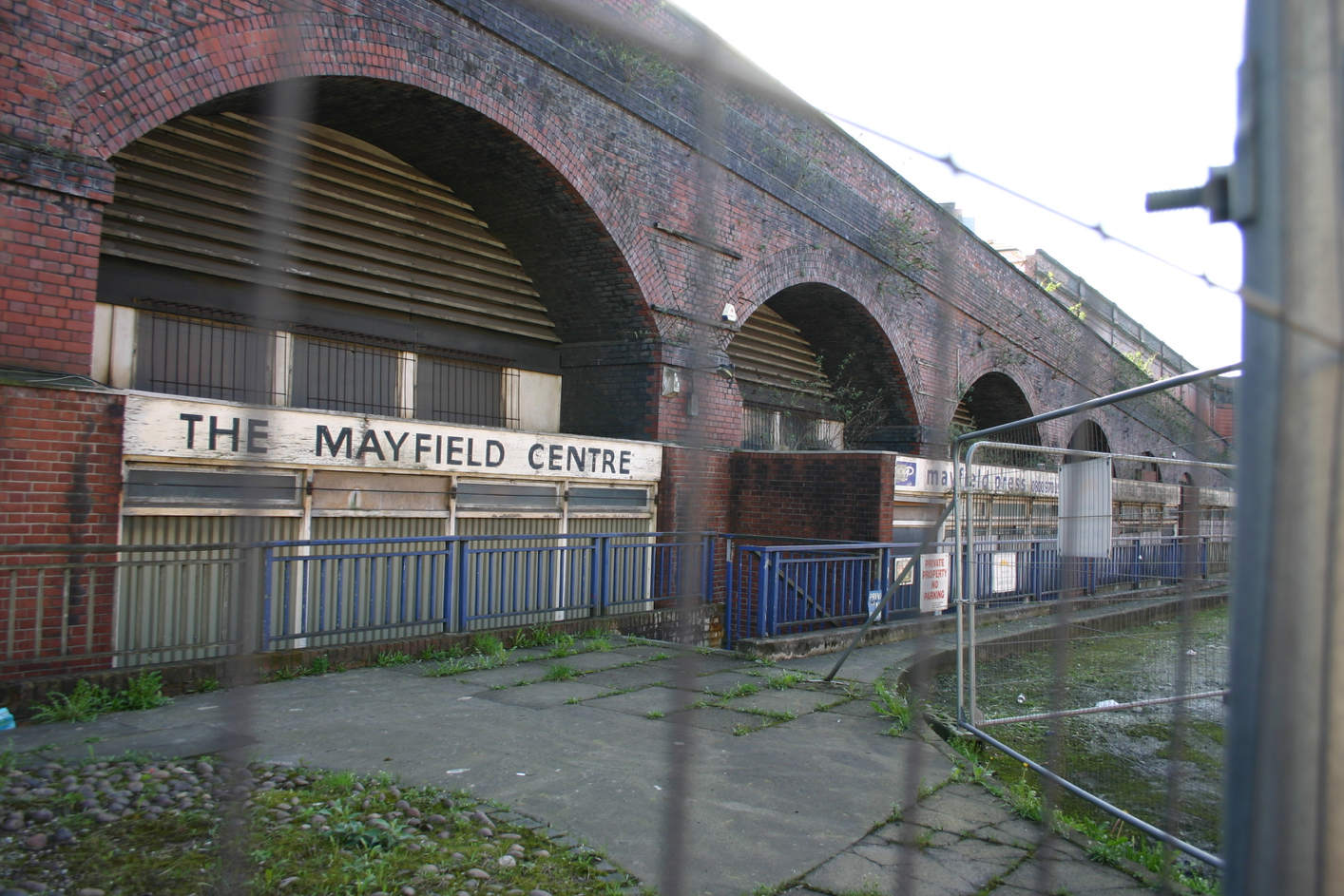
On arrival, it isn’t possible to explore inside the Mayfield Station (see figures 13 and 14). With Field Trip’s re-appropriation of Urban Ghosts, and that website’s population of geo-tagged Flickr images in its written content, neither the visual nor the navigational promises offered by the app are fulfilled, because of the change in context: from photographic documentation of urban explorations, to a revealing invitation to explore a ‘derelict’ location near you. The station, in the process of being regenerated for the 2017 Manchester International Festival, is completely inaccessible and enclosed in a long safety fence, with workers on-site. Yet, the app displays multiple photographs of the inside of the building, gathered by urban explorers who have clearly been inside: open steel roofs left to the weather, plants peeking through cracks in walls, moss covered rubble, and rusty rails. It is left for the avid Field Trip-per to stand in bewilderment outside the fencing, staring at workers in high-vis vests and boarded windows, and perhaps catch a glimpse through a crack in the heavy wooden doors. As an urban interface, the ruin seen onscreen, beckoning users to visit, remains largely hidden despite the visibility and legibility afforded by the interfacing between user, site, device, and software.
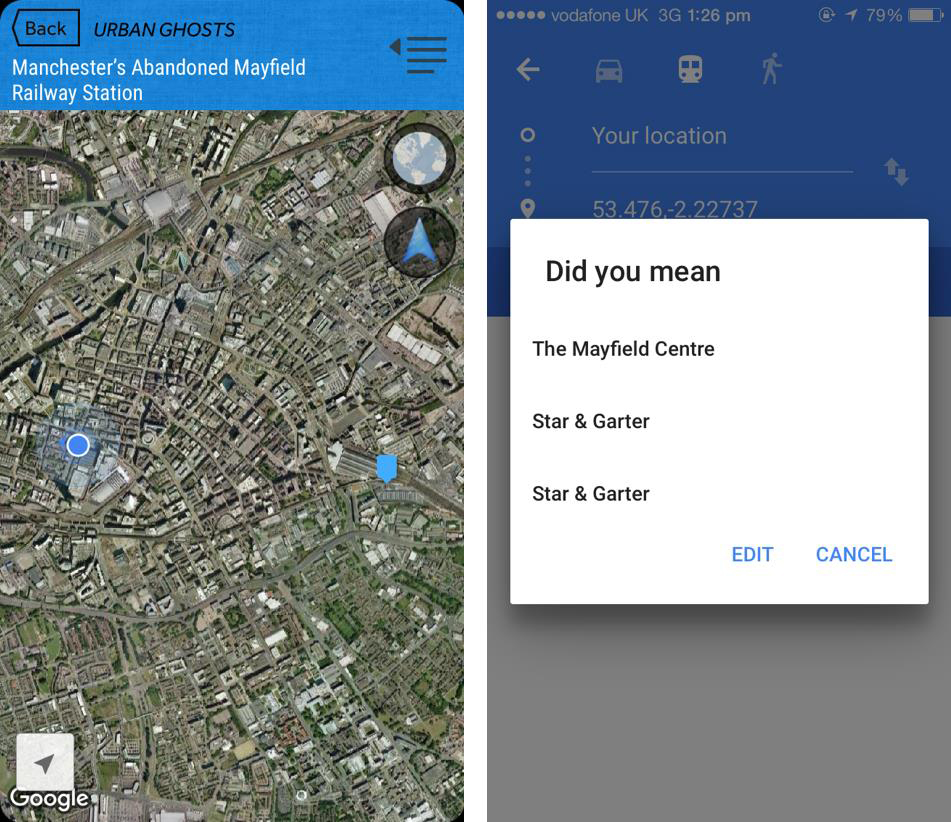
Of all the locations on this trip, it is the encounter with Mayfield that most clearly reveals the contradictory nature of an ambient play or exploration app that seeks to automate the process of urban exploration and finding the hidden city through mining geo-tagged information and data, and ego-centric mapping. Apps designed to facilitate happenstance visits to unusual and (often) liminal sites in the city (among other aims) through location-based pop-up info simultaneously omit and overemphasize place-based information. That is, while the app offers pinpoint locations for given sites, it is unable to provide up-to-date information for such locations, precisely because of the nature of an app that seeks to turn static information about inherently shifting space into an interactive experience. This is the crux of the problem with Field Trip, and other contemporary AR offerings like Pokémon GO. Such apps promise ubiquity, constant data flows, and an all-knowing – and all-seeing – survey of the user’s immediate surroundings. Yet this aim is not only impossible because of the perpetual flux inherent in space and place, but also because transient and decaying structures are exceptionally susceptible to sudden material transformation (the wicker woman being a case in point). Furthermore, where Google manages to maintain updated details on a variety of places (bars, cafes, theatres, and so on) based on user data, the hidden or secret is by nature unsuitable for automated experience management. It is in fact this void within the obsessive charting of knowable space that Field Trip attempts to fill.
Conclusion
As discussed above, the aim of uncovering neglected urban spaces links with a long history of urban intervention (from Situationist dérives to Benjamin’s fascination). At the same time, the visual and cartographical are implicit in mediating the relations between visible and invisible, through the political, [57] urban, [58] performative, [59] and interfacial. [60] Field Trip defeats its own purpose in attempting to reveal a hidden world by pinpointing it on a map and showing it to the user through images and informative descriptions. Despite its potential to capture difference, the app offers little more than data and an aesthetic, using regimes of navigation not to augment situated encounters, but to obscure urban materialities. This conflation is reminiscent of Verhoeff’s description of the fusion of aesthetic experience and knowledge:
Varied, but co-extending ambitions of science and spectacle maintain the desire to (visually) simulate and augment reality through art and technology. … In a visual regime of navigation, visuality entails a combination of epistemological models – ways in which seeing is related to knowing – and aesthetic norms and conventions. These sides to visuality are intricately intertwined, and both purposes of knowledge and aesthetic experience converge. [61]
Through the merging of visual material, navigation, but also visuality and data, Field Trip is an app that promises the user a dynamic experience of the city but appears oblivious to the constant flow and flux of the built environment. This is despite the fact that the app presents a promising potential to detour users from main streets and thoroughfares to the very political interstices or fringes of urban life so valued by Benjamin, the Situationists, Surrealists, and others.
The experiment relayed here has demonstrated several things about the visible and invisible spaces of a city. On one hand, it is very possible to use digital mapping to augment the experience of the city in terms of urban exploration that can uncover hidden aspects of a highly controlled environment. [62] On the other, the nature of location-based data and urban experience is such that apps which purport to offer individualized alternative urban experiences are, at least for the moment, stuck at an impasse between the visible and the invisible; stasis and flux. This is partly due to the leveling nature of digital mapping, which requires categorization and code to make sense of the world, and flattens out the contours of experience, a purpose that is contra to dynamic fascination.
More particularly, in relation to interfacing, fascination, and visibility, contrasting the app with flux and ruination allows two critiques: firstly, of the presumption that static data can interface with profoundly dynamic urban locations (a presumption troubled by the demolitions site or the decaying Mayfield Station). Secondly that a data-mining app that relies on proximity and visuality could make the ‘hidden’ legible in a persistently engaging and generative way (the Hidden Gem Church and The Guardian Exchange offered no potential for urban exploration or encounter). To find the hidden, you have to be in the hidden. In making the hidden visible, Field Trip ensures that it is no longer hidden at all.
A field trip with Field Trip provides a profoundly ambivalent experience in which the interfacing it directs routinely falters, and the most generative urban encounters (as defined by difference) are not those that it curates, but those that happen in between the direction of the app, when you are finding your way on your own, or waiting for another field trip to pop up. This is not the critical ambivalence that can be found in the hidden aspects of the modern city, as described by Abbas, which “establishes ambivalence not as a modish indecisiveness, but as a modus operandi which enlists the power of fascination for critique.” [63] Where ruins or other neglected sites might open up new readings of the city, [64] the Field Trip app relies upon the classification of others’ urban experiences through cartographic and visual regimes, in an effort to manufacture in-the-moment encounters within an unseen (but somehow mappable and legible) city. In essence, Field Trip and other ambient play apps claim to reproduce organic and ultimately random, serendipitous encounters, (the very things that Google Maps cannot provide, or even map) through a structured app-driven experience. [65]
Hence, from the outset the promises made by Field Trip were always foundationally and paradoxically at odds with its status as a visual regime of navigation: the invisible place must become visible and legible to operate within a visual regime, and the cartographical interface in digital media must classify, so that it may open itself up to navigation. The result is an app that selectively mines classifiable data (especially geo-located data) regarding that which is, according to its own themes, unclassified, producing an irresolvable tension between the experience of the unique and hidden (including the potential for productive fascination), and the capacity to make the invisible visible to the user. When conceptualized in relation to the urban interface as a space of encounter through discrete objects, there is a slippage between difference and order. Critically, what this slippage delivers (through thematics such as exploration, urban ghosts or hidden gems) is the reality of the city as a site of fragmentation and fascination after all, in which interfacing is a constant reconfiguration of moments of encounter – the very site at which other urban interfaces and ways of interfacing erupt.
Acknowledgments
The research for this essay was completed with the support of the departments of Geography and Sociology at the University of Manchester.
Authors Biographies
Dr Emma Fraser is a teaching fellow in Sociology at the University of Leeds. Her research is centered on urban decay and experience, video games, digital media, and the work of Walter Benjamin.
Dr Clancy Wilmott is a lecturer in Geography at the University of Manchester. Clancy works on mobile mapping, digital technologies, and post-colonial cities. She is the author of Mobile Mapping: Space, Cartography and the Digital.
Notes and References
[1] Walter Benjamin, The Arcades Project, trans. Howard Eiland and Kevin McLaughlin (Cambridge, MA and London: Harvard University Press, 1999), 83.
[2] Niantic, “Field Trip,” Google Play, last modified May 13, 2015, play.google.com/store/apps/details?id=com.nianticproject.scout&hl=en_GB.
[3] Nanna Verhoeff, Mobile Screens: The Visual Regime of Navigation (Amsterdam: Amsterdam University Press, 2012): 15.
[4] Ackbar Abbas, “On Fascination: Walter Benjamin’s Images,” New German Critique Autumn, no. 48 (1989): 43-62.
[5] Niantic, “Ingress,” Google Play, last modified June 20, 2018, https://play.google.com/store/apps/details?id=com.nianticproject.ingress&hl=en_GB; Niantic, “Pokémon GO,” Google Play, last modified October 3, 2018, https://play.google.com/store/apps/details?id=com.nianticlabs.pokemongo&hl=en_GB.
[6] Branden Hookway, Interface (Cambridge, MA and London: MIT Press, 2014), 4.
[7] Niantic, “Field Trip.”
[8] David B. Clarke, “The Ruins of the Future: On Urban Transience and Durability,” in Consuming the Entrepreneurial City: Image, Memory, Spectacle, eds. A. Cronin and K. Hetherington (London: Routledge, 2008); Graeme Gilloch, Myth and Metropolis: Walter Benjamin and the City (London: Polity Press, 1996); Ash Amin and Nigel Thrift, Cities: Reimagining The Urban (London: Polity Press, 2002); Johan Henneberry, ed. Transience and Permanence in Urban Development (Hoboken, NJ and West Sussex: John Wylie and Sons, 2017).
[9] Benjamin H. Bratton, “On Apps and Elementary Forms of Interfacial Life: Object, Image, Superimposition,” in The Imaginary App, eds. Paul D. Miller and Svitlana Matviyenko (Cambridge, MA and London: MIT press, 2014), 9.
[10] Larissa Hjorth and Ingrid Richardson, “Pokémon GO: Mobile Media Play, Place-making, and the Digital Wayfarer,” Mobile Media and Communication 5, no. 1 (2017): 5.
[11] Gilloch, Myth and Metropolis, 18.
[12] Ibid., 121-123.
[13] Jonathan Darling and Helen Wilson, Encountering the City: Urban Encounters from Accra to New York(London: Routledge, 2016).
[14] Maria Kaika, City of Flows: Modernity, Nature, and the City (London: Routledge, 2005).
[15] On the materiality of ruins, see Tim Edensor, Industrial Ruins, Space Aesthetics and Materiality (Oxford and New York, NY: Berg, 2005).
[16] Andreas Huyssen, Present Pasts, Urban Palimpsests and the Politics of Memory (Stanford, CA: Stanford University Press, 2005).
[17] Kevin Lynch, The Image of the City (1960; Cambridge, MA and London: MIT Press, 1990).
[18] Saskia Sassen, Expulsions: Brutality and Complexity in the Global Economy (Cambridge, MA: Harvard University Press, 2014).
[19] Huyssen, Present Pasts, Urban Palimpsests and the Politics of Memory; Lynch, The Image of the City; Sassen, Expulsions.
[20] Helen Wilson and Jonathan Darling, “The Possibilities of Encounter,” in Encountering the City, ed. Jonathan Darling and Helen Wilson (London: Routledge, 2016), 2.
[21] Emma Fraser, “Unbecoming place: urban imaginaries in transition in Detroit,” Cultural Geographies 25, no. 3 (2017): 441-458.
[22] James Ash, The Interface Envelope (London: Bloomsbury, 2015), 18-23.
[23] Ibid., 25.
[24] Doreen Massey, For Space (London: Sage, 2005).
[25] Kaika, City of Flows.
[26] Wilson and Darling, “The Possibilities of Encounter,” 2.
[27] Abbas, “On Fascination,” 52.
[28] Eruption is used here, and throughout, in reference to Avery Gordon’s work on haunting, which is of direct relevance to both the hidden or invisible, but also the process of making visible which inevitably produces eruptions at the site of occlusion from lived experience, including urban encounter. See: Avery Gordon, Ghostly Matters: Haunting and the Sociological Imagination (Minneapolis, MN: University of Minnesota Press, 2008).
[29] Jay David Bolter and Richard Grusin, Remediation: Understanding New Media (Cambridge, MA: The MIT Press, 2001).
[30] Likeways, “Likeways lets you Discover Interesting Places along the Route…,” accessed November 30, 2017, http://www.likeways.net/.
[31] Abandoned, “Abandoned: A Fly By Tour for iPhone and iPod Touch,” accessed November 30, 2017, http://abandonedapp.com/.
[32] Dérive app, “Urban Exploration App,” accessed November 30, 2017, http://deriveapp.com/s/v2/.
[33] Niantic, “Field Trip.”
[34] There are slight differences in the interfacing between the iOS and the Android user interfaces. Both are featured in this example.
[35] Emma Fraser, “Urban Exploration as Adventure Tourism: Journeying Beyond the Everyday,” in Liminal Landscapes: Travel, Experience and Spaces in-Between, eds. Hazel Andrews and Les Roberts (Abingdon and Oxon: Routledge, 2012), 136-151.
[36] Simon Sadler, The Situationist City (Cambridge, MA: MIT Press, 1998), 100; ibid. 72.
[37] Abbas, “On Fascination,” 47.
[38] The authors use the screenshots of both the iOS and Android versions of Field Trip, and Pokémon GO under the fair use provision of US copyright law, 17 U.S. Code § 107 – Limitations on exclusive rights: Fair use. For further information see: https://libraries.mit.edu/scholarly/publishing/using-copyrighted-content/
[39] Sadler, The Situationist City, 72.
[40] Abbas, “On Fascination,” 49; Gilloch, Myth and Metropolis.
[41] Bradley Garrett, Explore Everything Place Hacking the City (London and New York, NY: Versom, 2013), 78-79.
[42] Ibid.
[43] Alex Gekker, Uniquitous Cartography: Casual Power in Digital Maps (PhD diss., University of Utrecht, 2016).
[44] Huyssen, Present Pasts, Urban Palimpsests and the Politics of Memory.
[45] Verhoeff, Mobile Screens, 34.
[46] Melissa Gregg, “Inside the Data Spectacle,” Journal of Television and New Media 16, no. 1 (2015): 37-51.
[47] Lynch, The Image of the City.
[48] Verhoeff, Mobile Screens, 46.
[49] The University of Leicester has also been involved in submitting Field Trip cards, but this appears to be a one-off partnership, and it is unclear whether this is ongoing. See: University of Leicester, “Submit a Field Trip Card,” accessed November 30, 2017, https://www2.le.ac.uk/centres/elh/research/project/english-landscape-history/copy_of_submit-a-field-trip-card.
[50] Agnieszka Leszczynski, “Rematerializing GIScience,” Environment and Planning D: Society and Space27, no. 4 (2009): 613.
[51] Abbas, “On Fascination,” 62.
[52] Dora Apel, Beautiful Terrible Ruins: Detroit and the Anxiety of Decline (New Brunswick, NJ and London: Rutgers University Press, 2015), 20.
[53] Verhoeff, Mobile Screens, 102.
[54] Ibid., 30.
[55] Ibid.,133.
[56] Ingrid Richardson, “Mobile Technosoma: Some Phenomenological Reflections on Itinerant Media Devices,” The Fibreculture Journal 6 (2005).
[57] John Brian Harley, “Deconstructing the Map,” in Writing Worlds: Discourse, Text, and Metaphor in the Representation of Landscape, eds. Trevor J. Barnes and James S. Duncan (London: Routledge, 1992).
[58] Clancy Wilmott, “In-Between Mobile Maps and Media: Movement,” Television and New Media 18, no. 4 (2016): 320-335.
[59] Jeremy Crampton, “Cartography: Performative, Participatory, Political,” Progress in Human Geography 33, no. 6 (2009): 840-8.
[60] Gillian Rose, “Rethinking the Geographies of Cultural ‘Objects’ through Digital Technologies: Interface, Network and Friction,” Progress in Human Geography 40, no. 3 (2016): 334-51.
[61] Verhoeff, Mobile Screens, 34.
[62] Garrett, Explore Everything.
[63] Abbas, “On Fascination,” 52.
[64] Edensor, Industrial Ruins, 161.
[65] The impact of Field Trip is ongoing. Google has adapted the Field Trip concept for use as an educational VR app for school-aged children to go on virtual field trips. For example, Google Expeditions uses a similar visual hierarchy of knowledge, with a more sophisticated interface, but the “tour” takes place in the classroom, rather than out in the world, using VR headsets and/or phones. Meanwhile, Niantic is working on Harry Potter Wizards Unite, a mobile AR app where users will “explore real-world neighbourhoods” in order to “reveal the magic all around us.” Harry Potter Wizards Unite, “Harry Potter Wizards Unite,” accessed November 30, 2017, https://www.harrypotterwizardsunite.com/.
Bibliography
Abandoned. “Abandoned: A Fly By Tour for iPhone and iPod Touch.” Accessed November 30, 2017. http://abandonedapp.com/.
Abbas, Ackbar. “On Fascination: Walter Benjamin’s Images.” New German Critique Autumn, no. 48 (1989): 43-62.
Amin, Ash, and Nigel Thrift. Cities: Reimagining The Urban. London: Polity Press, 2002.
Apel, Dora. Beautiful Terrible Ruins: Detroit and the Anxiety of Decline. New Brunswick, NJ and London: Rutgers University Press, 2015.
Ash, James. The Interface Envelope. London: Bloomsbury, 2015.
Benjamin, Walter. The Arcades Project, translated by Howard Eiland and Kevin McLaughlin. Cambridge, MA and London: Harvard University Press, 1999.
Bolter, Jay David, and Richard Grusin. Remediation: Understanding New Media. Cambridge, MA: The MIT Press, 2001.
Bratton, Benjamin H. “On Apps and Elementary Forms of Interfacial Life: Object, Image, Superimposition.” In The Imaginary App, edited by Paul D. Miller and Svitlana Matviyenko, 1-16. Cambridge, MA and London: MIT press, 2014.
Clarke, David B. “The Ruins of the Future: On Urban Transience and Durability.” In Consuming the Entrepreneurial City: Image, Memory, Spectacle, edited by A. Cronin and K. Hetherington, 127-142. London: Routledge, 2008.
Crampton, Jeremy. “Cartography: Performative, Participatory, Political.” Progress in Human Geography 33, no. 6 (2009): 840-848.
Darling, Jonathan, and Helen Wilson. Encountering the City: Urban Encounters from Accra to New York. London: Routledge, 2016.
Dérive app. “Urban Exploration App.” Accessed November 30, 2017. http://deriveapp.com/s/v2/.
Edensor, Tim. Industrial Ruins, Space Aesthetics and Materiality. Oxford and New York, NY: Berg, 2005.
Fraser, Emma. “Unbecoming place: urban imaginaries in transition in Detroit.” Cultural Geographies 25, no. 3 (2017): 441-458.
Fraser, Emma. “Urban Exploration as Adventure Tourism: Journeying Beyond the Everyday.” In Liminal Landscapes: Travel, Experience and Spaces in-Between, edited by Hazel Andrews and Les Roberts, 136-151. Abingdon, UK: Routledge, 2012.
Garrett, Bradley. Explore Everything Place Hacking the City. London and New York, NY: Verso, 2013.
Gekker, Alex. Uniquitous Cartography: Casual Power in Digital Maps. PhD diss., University of Utrecht, 2016.
Gilloch, Graeme. Myth and Metropolis: Walter Benjamin and the City. London: Polity Press, 1996.
Gordon, Avery. Ghostly Matters: Haunting and the Sociological Imagination. Minneapolis, MN: University of Minnesota Press, 2008.
Gregg, Melissa. “Inside the Data Spectacle.” Journal of Television and New Media 16, no. 1 (2015): 37-51.
Harley, John Brian. “Deconstructing the Map.” In Writing Worlds: Discourse, Text, and Metaphor in the Representation of Landscape, edited by Trevor J. Barnes and James S. Duncan. London: Routledge, 1992: 231-248.
Harry Potter Wizards Unite. “Harry Potter Wizards Unite.” Accessed November 30, 2017. https://www.harrypotterwizardsunite.com/.
Henneberry, Johan, ed. Transience and Permanence in Urban Development. Hoboken, NJ and West Sussex: John Wylie and Sons, 2017.
Hjorth, Larissa, and Ingrid Richardson. “Pokémon GO: Mobile Media Play, Place-making, and the Digital Wayfarer.” Mobile Media and Communication 5, no. 1 (2017): 3-14.
Hookway, Branden. Interface. Cambridge, MA and London: MIT Press, 2014.
Huyssen, Andreas. Present Pasts, Urban Palimpsests and the Politics of Memory. Stanford, CA: Stanford University Press, 2005.
Kaika, Maria. City of Flows: Modernity, Nature, and the City. London: Routledge, 2005.
Leszczynski, Agnieszka. “Rematerializing GIScience.” Environment and Planning D: Society and Space 27, no. 4 (2009): 609-615.
Likeways. “Likeways lets you Discover Interesting Places along the Route…” Accessed November 30, 2017. http://www.likeways.net/.
Lynch, Kevin. The Image of the City. Cambridge, MA and London: MIT Press, 1990. First published 1960.
Massey, Doreen. For Space. London: Sage, 2005.
Niantic. “Field Trip.” Google Play. Last modified May 13, 2015. play.google.com/store/apps/details?id=com.nianticproject.scout&hl=en_GB.
Niantic. “Ingress.” Google Play. Last modified June 20, 2018. https://play.google.com/store/apps/details?id=com.nianticproject.ingress&hl=en_GB.
Niantic. “Pokémon GO.” Google Play. Last modified October 3, 2018. https://play.google.com/store/apps/details?id=com.nianticlabs.pokemongo&hl=en_GB.
Richardson, Ingrid. “Mobile Technosoma: Some Phenomenological Reflections on Itinerant Media Devices.” The Fibreculture Journal 6 (2005).
Rose, Gillian. “Rethinking the Geographies of Cultural ‘Objects’ through Digital Technologies: Interface, Network and Friction.” Progress in Human Geography 40, no. 3 (2016): 334-351.
Sadler, Simon. The Situationist City. Cambridge, MA: MIT Press, 1998.
Sassen, Saskia. Expulsions: Brutality and Complexity in the Global Economy. Cambridge, MA: Harvard University Press, 2014.
University of Leicester. “Submit a Field Trip Card.” Accessed November 30, 2017. https://www2.le.ac.uk/centres/elh/research/project/english-landscape-history/copy_of_submit-a-field-trip-card.
Verhoeff, Nanna. Mobile Screens: The Visual Regime of Navigation. Amsterdam: Amsterdam University Press, 2012.
Wilmott, Clancy. “In-Between Mobile Maps and Media: Movement.” Television and New Media 18, no. 4 (2016): 320-335.
Wilson, Helen, and Jonathan Darling. “The Possibilities of Encounter.” In Encountering the City, edited by Jonathan Darling and Helen Wilson, 1-24. London: Routledge, 2016.

